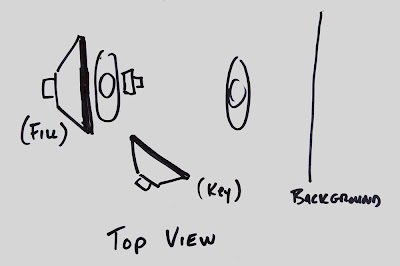
If you're considering entering medical school, it's important for you to determine a strategy for dealing with your parents. Simply put, parents seem to have missed the memo letting everyone know that medical school is "challenging"; there is no other way to explain why they are so consistently unsympathetic to their children's needs and struggles. ("Challenging" is the euphemism of choice these days; initially, medical school administrations wanted to use more accurate language, but exhaustive research determined that using words like "pathologically depressing," "psychosis-inducing," and "hell" would not be the most profitable marketing strategy.)
Most people would agree that since medical school prepares you for an occupation in which you will be dealing with life and death on a daily basis, it's important that you take it seriously and approach it with your full, undivided attention. However, this kind of logic is lost on parents. Parents are fragile, emotional creatures who have their own human neuroses and agendas through which they will aggravate you.
Perhaps your parents desperately want you to get your medical degree so they can tell all your relatives about how smart their branch of the family is. Or maybe they've recently developed an anxiety disorder, and can no longer go more than 15 minutes without calling to guilt trip you into making plans to come home. Or, perhaps your parents are partially supporting your way through school, and have become obsessed with making sure their money is being spent wisely.
Those of you with one or both parents as medical doctors may be under the impression that your parents will be more supportive of you than a non-doctor parent would be, seeing as how they once had to go through the same "challenging" educational process as you. However, science has shown that parents who are doctors are actually less likely to be sympathetic to their children's issues once they enter medical school. The reasons for this are not completely understood, although research is continually being done on the subject. Some studies have shown that doctors have been so completely beat down by the medical establishment that they spend most of their free time feeling sorry for themselves; they have no empathy left to expend on their children. Other studies indicate that perhaps there is a correlation between succeeding in medical school and having terrible parenting skills. Nevertheless, the fact remains that children of doctors who are thinking of entering medical school need to be prepared for especially callous behavior on the part of their parents.
Regardless of what your situation is, you need to have a game plan for relieving your parents' tension. Otherwise, you could be looking at four years of near-constant arguments and drama, which is fun on Gossip Girl but frustrating in real life. A few strategies that have proven effective in the past include:
- Ignoring them and dealing exclusively with your more wealthy and understanding relatives: while there are many benefits to this course of action, the most overlooked one is that it enables you to surreptitiously keep tabs on your parents to know what they're up to.
- Complaining about your siblings in order to distract them: this can be a useful maneuver if you find yourself dangerously close to an impending argument.
- Appeasing them through ritual animal sacrifice: note that this may not work if your parents adhere to a monotheistic religion.
- Moving away and changing your name without telling them: the disadvantage to this is that you won't see your parents for at least four years, but the advantage is that you won't see your parents for at least four years.
 We get lots of portrait shoot videos around here, but not so much with the high-end product shots. And this one is a real treat, as it shows the full process for creating the cosmetics ad for T. LeClerc shown at left.
We get lots of portrait shoot videos around here, but not so much with the high-end product shots. And this one is a real treat, as it shows the full process for creating the cosmetics ad for T. LeClerc shown at left. I loved this. And honestly, I do not know why more shooters are not doing videos like this to augment their marketing to future clients.
I loved this. And honestly, I do not know why more shooters are not doing videos like this to augment their marketing to future clients.















